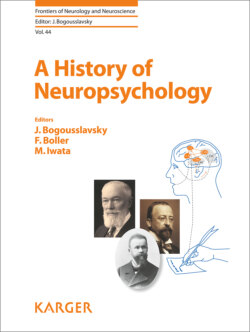Читать книгу A History of Neuropsychology - Группа авторов - Страница 26
На сайте Литреса книга снята с продажи.
The Role of the Corpus Callosum
ОглавлениеBy the 1920s, with the discovery and further documentation of lateral differences in function along with reports of possible clues to their anatomical origins, cerebral specialization had become a bedrock principle of neuropsychology, although the terms “major” and “minor” persisted, implying that left-hemisphere functions were still seen as more important.
The discovery rekindled the interest in an old question about the corpus callosum. Before Broca, it was regarded as a bridge between functionally symmetrical hemispheres. Thus Gall [57], recognizing that each pair of organs must be “united for mutual influence and the attainment of a common end,” named the “transverse layers of fibers (commissures)” as the link (p 600). This was a major advancement from the still older view of Vesalius [58] that its role was purely mechanical: to connect the two halves of the brain, thereby “preserv(ing) the patency of the ventricular cavities and support(ing) the fornix” (p 578; for review, see Harris [59].
In the new era of cerebral specialization, the corpus callosum could be seen as connecting functionally asymmetric hemispheres, allowing their differences to merge in the service of mind. The new era also raised new questions: What if a lesion destroyed the left visual cortex and the splenium of the corpus callosum, preventing information sent to the right visual cortex from reaching the angular gyrus of the left hemisphere? Or, after research showed a region of cortex to be motorically excitable, what if an anterior callosal lesion prevented a verbal command to use the left hand from reaching that region of the right hemisphere? It was these questions that inspired analyses of disorders of reading (Dejerine [35]) and praxis (Liepmann [37]).
